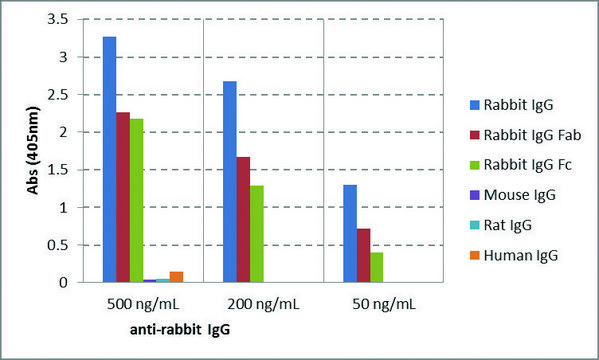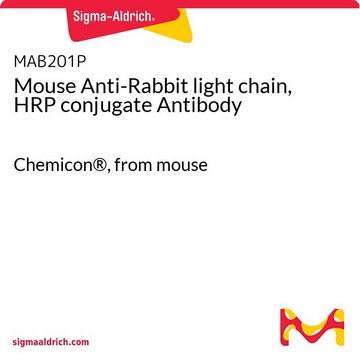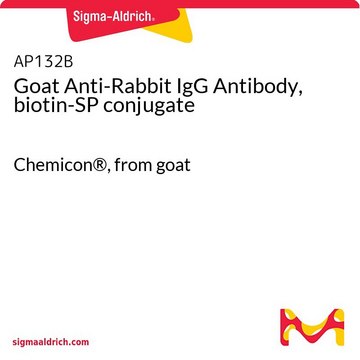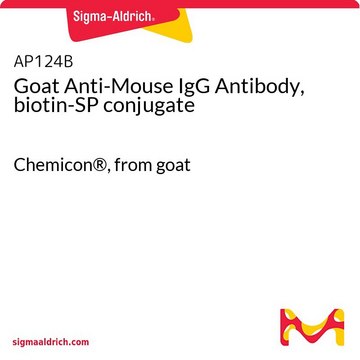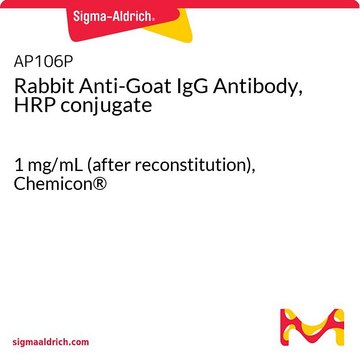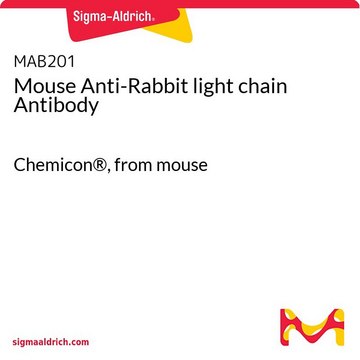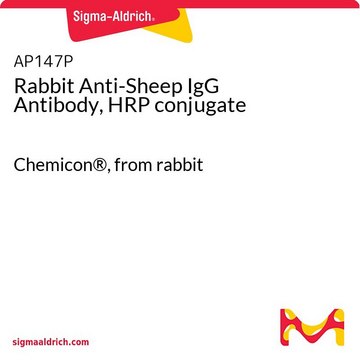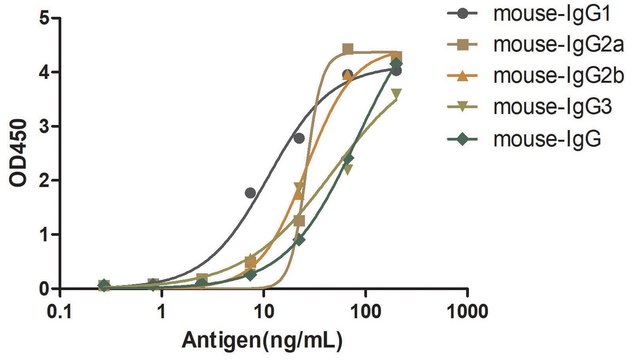MAB201B
Mouse Anti-Rabbit light chain Antibody, biotin conjugate
Chemicon®, from mouse
Sign Into View Organizational & Contract Pricing
All Photos(1)
About This Item
UNSPSC Code:
12352203
eCl@ss:
32160702
NACRES:
NA.46
Recommended Products
biological source
mouse
Quality Level
conjugate
biotin conjugate
antibody product type
secondary antibodies
clone
monoclonal
species reactivity
rabbit
manufacturer/tradename
Chemicon®
technique(s)
ELISA: suitable
flow cytometry: suitable
immunohistochemistry: suitable
western blot: suitable
isotype
IgG1κ
shipped in
wet ice
target post-translational modification
unmodified
General description
Antibody molecules typically comprise two immunoglobulin light chains covalently bound to a pair of heavy chains. Immunoglobulin light chains occur in two types, designated by the Greek letters kappa and lambda. Kappa and gamma light chains are approximately 250 amino acids in length with an average mass of about 25 kDa. The ratio of kappa to lambda found in the immunoglobulin population varies by species.
Specificity
Minimal cross-reaction with bovine, goat, Armenian hamster, horse, human, mouse, rat, and sheep.
Application
Mouse anti-Rabbit light chain Antibody, biotin conjugate is an antibody against Rabbit light chain for use in ELISA, FC, WB, IH.
Western Blotting: 1:20,000 - 1:400,000
Immunohistochemistry: 1:500 - 1:5,000 on tissue sections
Flow Cytometry: 1:200 - 1:1,000
Optimal working dilutions must be determined by the end user.
Immunohistochemistry: 1:500 - 1:5,000 on tissue sections
Flow Cytometry: 1:200 - 1:1,000
Optimal working dilutions must be determined by the end user.
Target description
25 kDa
Physical form
Lyophilized from 0.01M Sodium Phosphate, 0.25M NaCl, pH 7.6, 0.05% Sodium Azide. 15 mg/mL BSA as stabilizer (IgG-Free, Protease-Free)
Storage and Stability
Maintain lyophilized product at 2°-8°C for up to 12 months. After reconstitution the product is stable for six weeks at 2°-8°C in the dark as an undiluted liquid. Reconstitute vial with of distilled water (addition of 0.5 ml water will yield a final concentration of 1.1 mg/mL). For extended storage after reconstitution, add an equal volume of glycerol to make a final concentration of 50% glycerol followed by storage at -20°C in undiluted aliquots for up to 12 months. Please note the concentration of protein (and buffer salts) will decrease to one-half of the original after the addition of glycerol. Avoid repeated freeze thaw cycles. Keep away from light.
Legal Information
CHEMICON is a registered trademark of Merck KGaA, Darmstadt, Germany
Not finding the right product?
Try our Product Selector Tool.
Storage Class Code
12 - Non Combustible Liquids
WGK
WGK 2
Flash Point(F)
Not applicable
Flash Point(C)
Not applicable
Certificates of Analysis (COA)
Search for Certificates of Analysis (COA) by entering the products Lot/Batch Number. Lot and Batch Numbers can be found on a product’s label following the words ‘Lot’ or ‘Batch’.
Already Own This Product?
Find documentation for the products that you have recently purchased in the Document Library.
N Rampersaud et al.
British journal of pharmacology, 167(7), 1467-1479 (2012-07-11)
BACKGROUND AND PURPOSE Parkinson's disease (PD) is characterized by progressive dopaminergic cell loss; however, the noradrenergic system exhibits degeneration as well. Noradrenergic deficit in PD may be responsible for certain non-motor symptoms of the pathology, including psychiatric disorders and cognitive
Our team of scientists has experience in all areas of research including Life Science, Material Science, Chemical Synthesis, Chromatography, Analytical and many others.
Contact Technical Service
